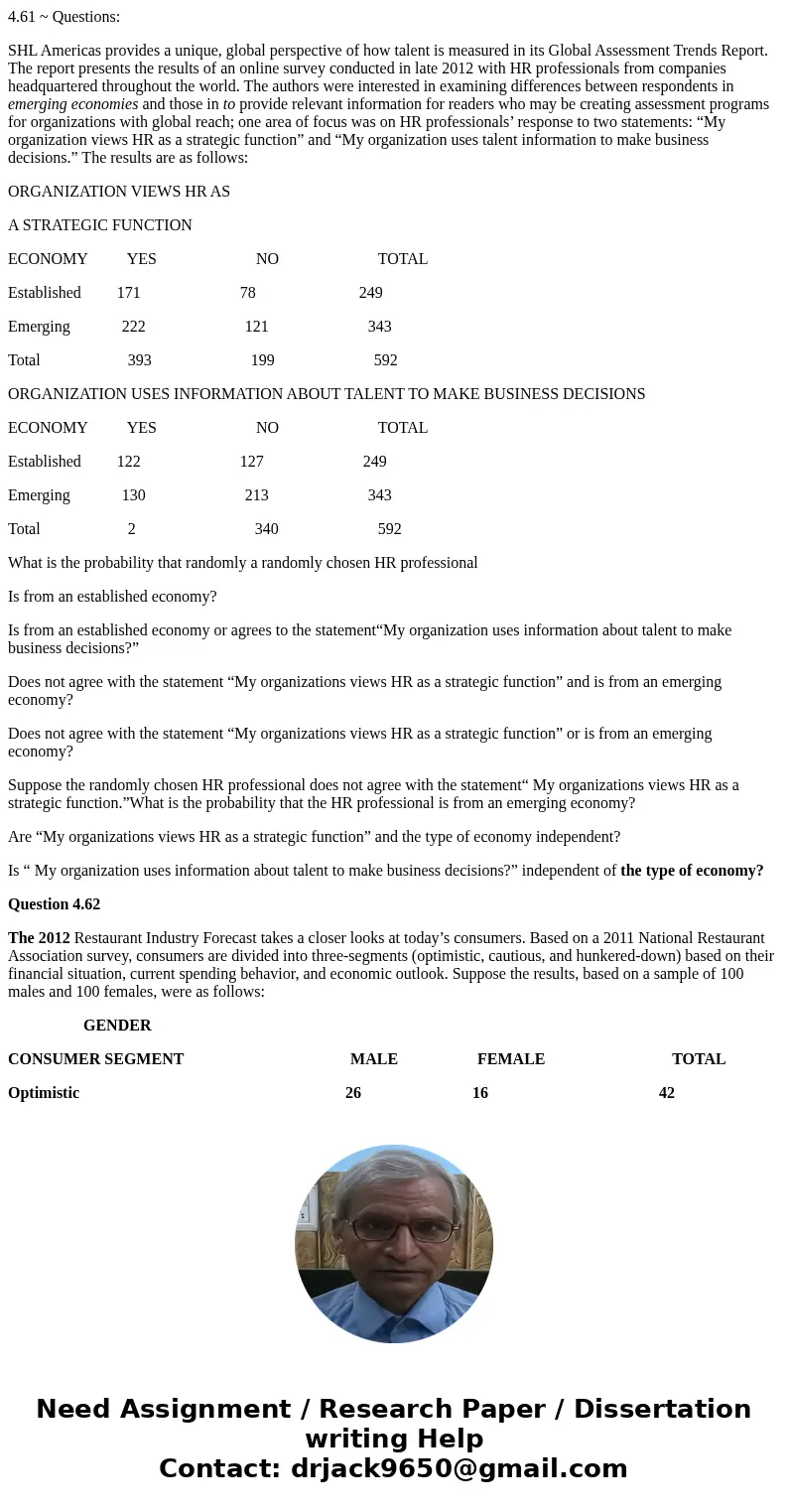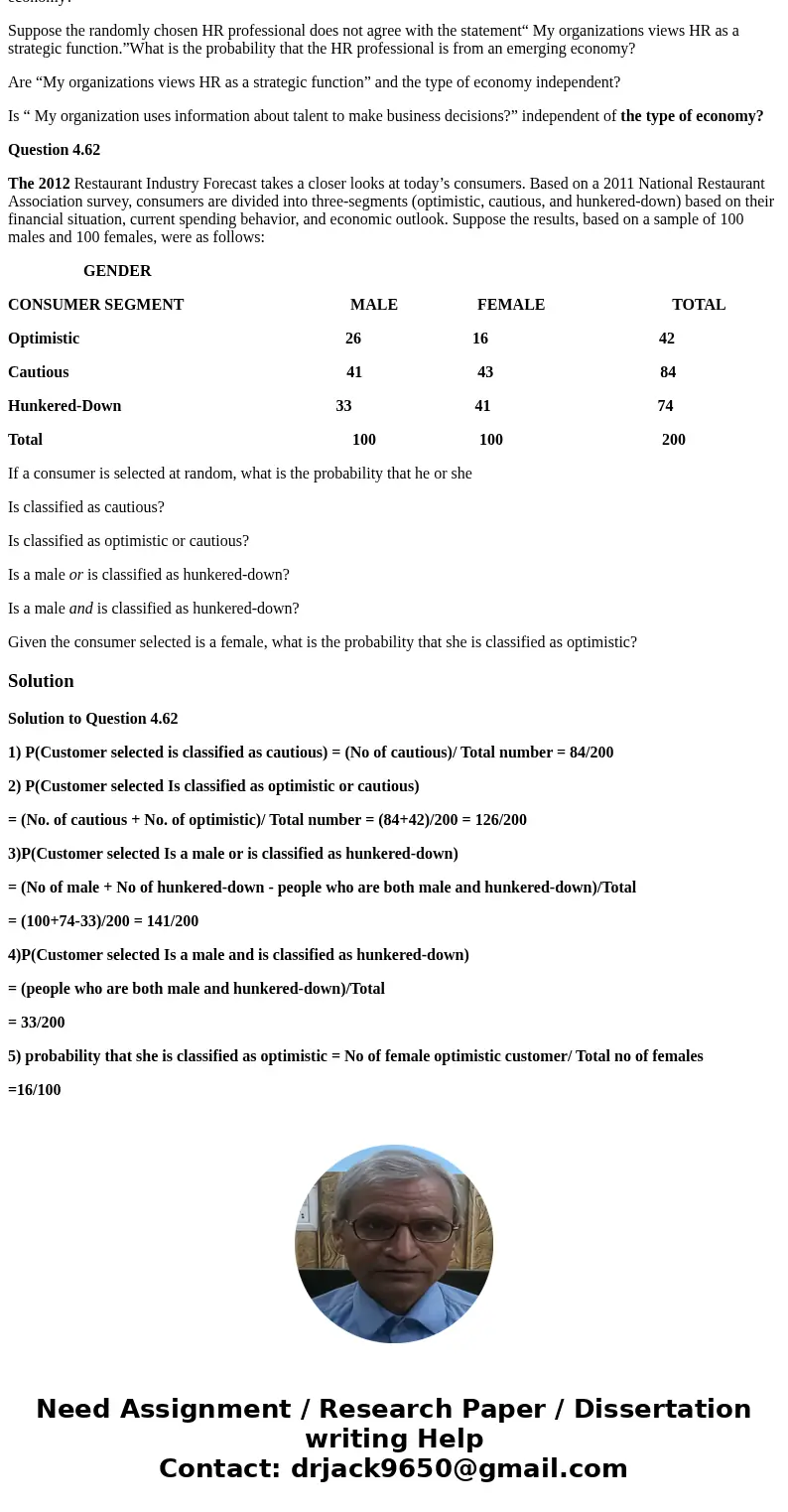461 Questions SHL Americas provides a unique global perspec
4.61 ~ Questions:
SHL Americas provides a unique, global perspective of how talent is measured in its Global Assessment Trends Report. The report presents the results of an online survey conducted in late 2012 with HR professionals from companies headquartered throughout the world. The authors were interested in examining differences between respondents in emerging economies and those in to provide relevant information for readers who may be creating assessment programs for organizations with global reach; one area of focus was on HR professionals’ response to two statements: “My organization views HR as a strategic function” and “My organization uses talent information to make business decisions.” The results are as follows:
ORGANIZATION VIEWS HR AS
A STRATEGIC FUNCTION
ECONOMY YES NO TOTAL
Established 171 78 249
Emerging 222 121 343
Total 393 199 592
ORGANIZATION USES INFORMATION ABOUT TALENT TO MAKE BUSINESS DECISIONS
ECONOMY YES NO TOTAL
Established 122 127 249
Emerging 130 213 343
Total 2 340 592
What is the probability that randomly a randomly chosen HR professional
Is from an established economy?
Is from an established economy or agrees to the statement“My organization uses information about talent to make business decisions?”
Does not agree with the statement “My organizations views HR as a strategic function” and is from an emerging economy?
Does not agree with the statement “My organizations views HR as a strategic function” or is from an emerging economy?
Suppose the randomly chosen HR professional does not agree with the statement“ My organizations views HR as a strategic function.”What is the probability that the HR professional is from an emerging economy?
Are “My organizations views HR as a strategic function” and the type of economy independent?
Is “ My organization uses information about talent to make business decisions?” independent of the type of economy?
Question 4.62
The 2012 Restaurant Industry Forecast takes a closer looks at today’s consumers. Based on a 2011 National Restaurant Association survey, consumers are divided into three-segments (optimistic, cautious, and hunkered-down) based on their financial situation, current spending behavior, and economic outlook. Suppose the results, based on a sample of 100 males and 100 females, were as follows:
GENDER
CONSUMER SEGMENT MALE FEMALE TOTAL
Optimistic 26 16 42
Cautious 41 43 84
Hunkered-Down 33 41 74
Total 100 100 200
If a consumer is selected at random, what is the probability that he or she
Is classified as cautious?
Is classified as optimistic or cautious?
Is a male or is classified as hunkered-down?
Is a male and is classified as hunkered-down?
Given the consumer selected is a female, what is the probability that she is classified as optimistic?
Solution
Solution to Question 4.62
1) P(Customer selected is classified as cautious) = (No of cautious)/ Total number = 84/200
2) P(Customer selected Is classified as optimistic or cautious)
= (No. of cautious + No. of optimistic)/ Total number = (84+42)/200 = 126/200
3)P(Customer selected Is a male or is classified as hunkered-down)
= (No of male + No of hunkered-down - people who are both male and hunkered-down)/Total
= (100+74-33)/200 = 141/200
4)P(Customer selected Is a male and is classified as hunkered-down)
= (people who are both male and hunkered-down)/Total
= 33/200
5) probability that she is classified as optimistic = No of female optimistic customer/ Total no of females
=16/100


 Homework Sourse
Homework Sourse